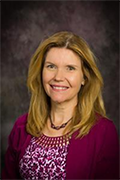July 2, 2019
Does Your Community Have a Culture?

Does your community have a unique culture? First we must understand what is meant by community culture. It includes everything from ideas to language, from religion to values, from the history of its development to what its people wear, from the types of schools and learning to the kinds of stores on main street, from kinds of employment to levels of poverty, from the civic engagement of its population to its local politics, …and I am sure you can think of much, much more. So, after thinking about that for a bit, I bet you would answer that your community does have its own culture.
Last Wednesday, there was a workshop that gathered agents from most of the 32 locations that have received our Culture of Health grants. Program leader coordinators, specialists (and even a couple of us administrators!) worked with them to expand their thinking about their own community culture. These agents have chosen to help improve their community culture as it pertains to health... in the broadest of terms. They want to help their community place a value on the health of the people that live there. They want their communities to support people to be able to live a healthier, longer, and more productive life.
The day was spent learning about building partnerships and engaging the community, doing an environmental scan, and assessing their priorities. They learned the importance of working with partners and stakeholders from all kinds of backgrounds to develop innovative strategies and assess their feasibility. They learned the importance of communicating and promoting potential changes in order to get buy-in and lessen resistance. They learned that all of this needs to happen before implementation of a planned community change. And finally, they learned that measuring whether you have been successful in making any lasting community change is necessary if you want to make any progress.
Doesn’t this sound like most of what we do (or need to do) with our Extension programs? It seems to me that in order to have success when we educate people to make changes, they have to have the community culture that is supportive of them and makes it easier for them to make those changes or we aren’t going to move the bar. It is so much easier for people to just keep doing what they have always done, than to make changes, even when the benefits to them are great.
So, while we were emphasizing the building of a culture of health in communities last Wednesday, the principles are transferable to all of our Extension work. We call it policy, system and environmental change (PSE) in public health work... but call it community development, collective impact, or whatever else you want. Ultimately, these principles can help us improve the lives, livelihoods and communities in Kansas.